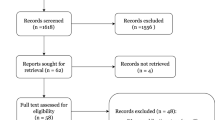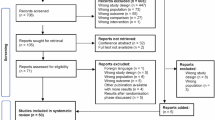Abstract
Introduction
In India, the incidence of penetrating spine injury (PSI) is increasing because of the increased use of advanced ballistics (missile PSI) among military personnel and sophisticated tools and construction instruments like nail-guns or drills (non-missile PSI) among civilians. These injuries are associated with a risk of neurological damage, central nervous system infections, vascular injury, dural tear followed by CSF leakage, and spinal instability.
Case presentation
A 35-year-old male presented with a non-missile PSI with retained iron nail bisecting his dorsal spinal cord, without any motor deficits. Patient presented with only left lower limb proprioceptive loss and L1–L3 paresthesia. Nail removal was done on emergent basis without any further neurological damage.
Discussion
To the best of our knowledge, this presentation of a non-missile PSI and has not been previously reported. The specific clinical presentation of this distinct type of injury to the midline structures of the spinal cord is hence named “midline cord syndrome”.
Similar content being viewed by others
Log in or create a free account to read this content
Gain free access to this article, as well as selected content from this journal and more on nature.com
or
References
Jones FD, Woosley RE. Delayed myelopathy secondary to retained intraspinal metallic fragment. Case report. J Neurosurg. 1981;55:979–82.
Wright RL. Intramedullary spinal cord abscess. J Neurosurg. 1965;23:208–10.
Velmahos GC, Degiannis E, Hart K, Souter I, Saadia R. Changing profiles in spinal cord injuries and risk factors influencing recovery after penetrating injuries. J Trauma. 1995;38:334–7.
Kirshblum SC, Burns SP, Biering-Sorensen F, Donovan W, Graves DE, Jha A, et al. International standards for neurological classification of spinal cord injury (Revised 2011). J Spinal Cord Med. 2011;34:535–46.
Lipschitz R, Block J. Stab wounds of the spinal cord. Lancet Lond Engl. 1962;28:169–72.
Peacock WJ, Shrosbree RD, Key AG. A review of 450 stabwounds of the spinal cord. South Afr Med J Suid-Afr Tydskr Vir Geneeskd. 1977;51:961–4.
Thakur RC, Khosla VK, Kak VK. Non-missile penetrating injuries of the spine. Acta Neurochir (Wien). 1991;113:144–8.
de Villiers JC, Grant AR. Stab wounds at the craniocervical junction. Neurosurgery. 1985;17:930–6.
Heary RF, Vaccaro AR, Mesa JJ, Balderston RA. Thoracolumbar infections in penetrating injuries to the spine. Orthop Clin North Am. 1996;27:69–81.
Singh DK, Gupta A, Mittal R, Saggar V. Penetrating injury to cervical spine from a nail gun. Indian Neurotrauma. 2009;6:147–9.
Holt GR, Kostohryz G. Wound ballistics of gunshot injuries to the head and neck. Arch Otolaryngol Chic Ill 1960. 1983;109:313–8.
Nasser R, Nakhla J, Sharif S, Kinon M, Yassari R. Penetrating thoracic spinal cord injury with ice pick extending into the aorta. A technical note and review of the literature. Surg Neurol Int. 2016;7(Suppl 28):S763–6.
Prendergast MR, Saxe JM, Ledgerwood AM, Lucas CE, Lucas WF. Massive steroids do not reduce the zone of injury after penetrating spinal cord injury. J Trauma. 1994;37:576–9. discussion579–580.
Alleyne CH, Cawley CM, Shengelaia GG, Barrow DL. Microsurgical anatomy of the artery of Adamkiewicz and its segmental artery. J Neurosurg. 1998;89:791–5.
Takase K, Sawamura Y, Igarashi K, Chiba Y, Haga K, Saito H, et al. Demonstration of the artery of Adamkiewicz at multi- detector row helical CT. Radiology. 2002;223:39–45.
Rogers FB, Osler TM, Shackford SR, Wald SL. Isolated stab wound to the artery of Adamkiewicz: case report and review of the literature. J Trauma. 1997;43:549–51.
Doğan S, Kocaeli H, Taşkapilioğlu MO, Bekar A. Stab injury of the thoracic spinal cord: case report. Turk Neurosurg. 2008;18:298–301.
Kulkarni AV, Bhandari M, Stiver S, Reddy K. Delayed presentation of spinal stab wound: case report and review of the literature. J Emerg Med. 2000;18:209–13.
Author information
Authors and Affiliations
Corresponding author
Ethics declarations
Conflict of interest
The authors declare that they have no conflict of interest.
Additional information
These authors contributed equally: Bhaskar Sarkar and Kaustubh Ahuja
Rights and permissions
About this article
Cite this article
Sarkar, B., Ahuja, K., Choudhury, A.K. et al. Penetrating spine injury bisecting thoracic spinal canal with no significant neurological deficits—The midline cord syndrome. Spinal Cord Ser Cases 4, 102 (2018). https://doi.org/10.1038/s41394-018-0136-x
Received:
Revised:
Accepted:
Published:
DOI: https://doi.org/10.1038/s41394-018-0136-x
This article is cited by
-
Blunt traumatic posterior cord syndrome
Spinal Cord Series and Cases (2022)



